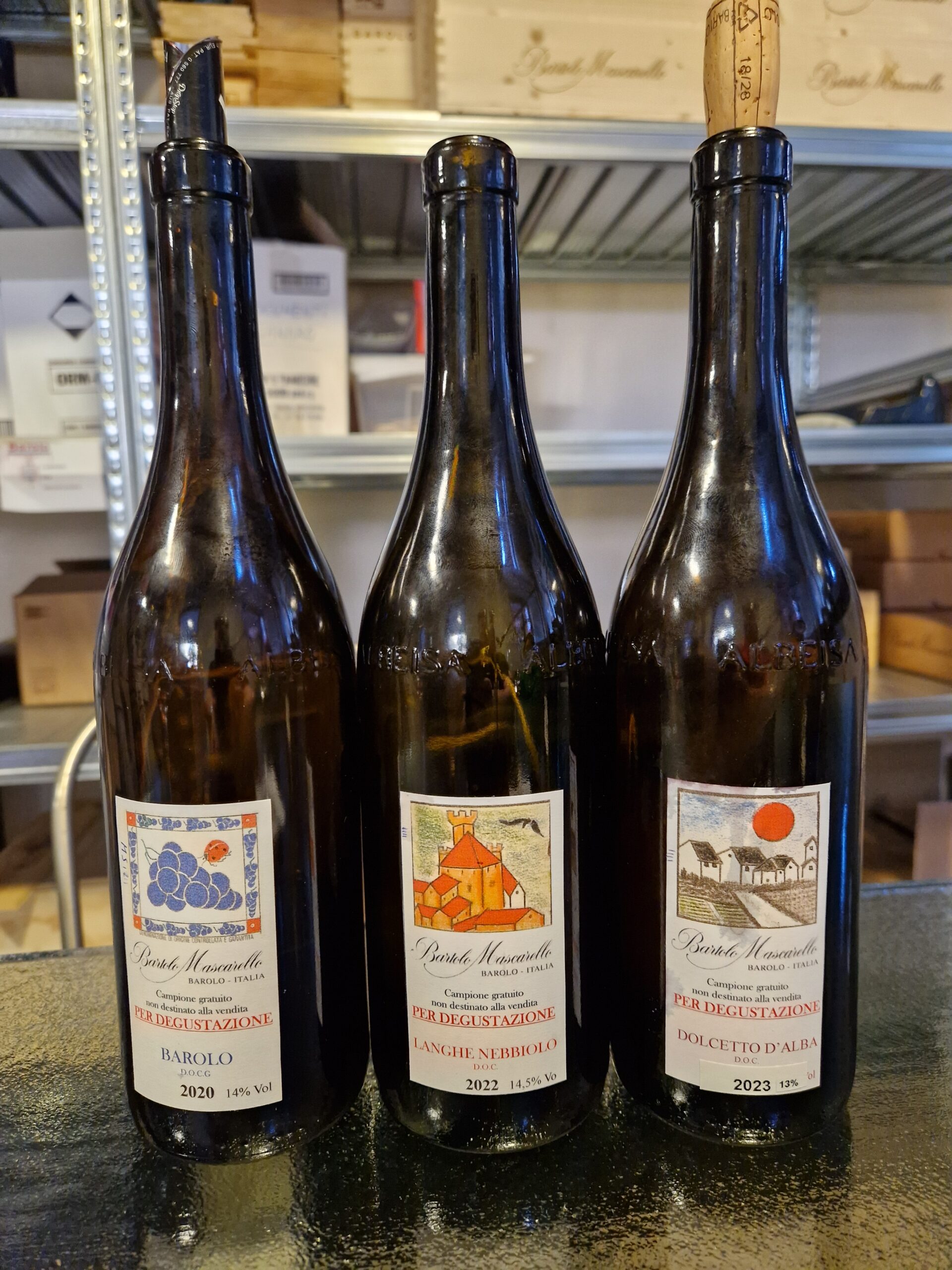While picking up our allocation at Bartolo Mascarello, we had a very interesting tasting with Emanuele (and partially with Maria Teresa). As always, it was fascinating to get some insights on the vintages but also the developments at the winery.
A little background
Bartolo Mascarello is an ultra-traditional producer in Barolo. Founded in 1919 by Giulio Mascarello and his wife Franca Brezza as Cantina Mascarello, the winery became very famous under the leadership of their charismatic son, Bartolo Mascarello, who joined the winery in 1945. Tied to the wheelchair due to illness for several decades of his life, Bartolo Mascarello was an iconic figure in the region and was well-known not just for his wines, but also for his strong opinions on many things including and particularly politics. He was a cousin to another charismatic winemaker of the same generation, Giuseppe Rinaldi. They both shared a similarly traditional approach to winemaking, but also many of their strong political views. Bartolo Mascarello developped a deep interest and great talent in painting and drawing in the later part of his life. Lucky buyers have received bottles of Barolo with artist labels painted by him. Unforgettable is his most famous label, the iconic “No barrique / No Berlusconi”.

In a time, when not as many women were involved in winemaking, 1993, Bartolo’s daughter Maria Teresa joined the winery and she took over and made her first wine with the 1998 vintage. Over the years, Maria Teresa has only made small adjustments (like replacing some old botti, implementing a sorting table), increased attention to detail like perfect ripening of the grapes, but the approach to winemaking remained broadly the same.
For the flagship wine, the Barolo, five excellent vineyards in Rocche dell’Annunziata, Cannubi, Rué, San Lorenzo and (new) Monrobiolo di Bussia are picked and co-fermented, which is a very rare thing today. The maceration is very long, approximately 55 days, the wines stay in large botti and while there is meticulous attention to detail, there is not much intervention. While the winery has already enjoyed an iconic reputation for decades, the wines were sometimes a little inconsistent, as it was with other legendary producers of that time like Cappellano or Accomasso. Since Maria Teresa took over, year after year the Bartolo Mascarello Barolo is one of the very best Barolos of the vintage. I consider this a benchmark Barolo and one of the great wines of the world.
Tasting the new vintage is always an experience, and usually sets the bar very high for everything else we will taste. This time, besides the 2020 Barolo we also got to taste the 2023 Dolcetto and the 2022 Nebbiolo. In times, when top vineyards in the Langhe are sold at record prices, it is a testament to Maria Teresa’s respect for her region and tradition that she is still producing Dolcetto, Freisa and Barbera from very prestigious vineyards. Unfortunately, many other wineries have ripped out those grape varieties and replanted with Nebbiolo.
We tasted the following wines:
2023 Bartolo Mascarello, Dolcetto d’Alba, 90 points
With 13% alc., bottled 3 months ago. From a year with extreme drought, but then also some rain, rain came very suddenly and intensely but at the wrong times, scorching hot summer with 37 – 38 degrees Celsius. Rollercoaster year.
Notes of cherries, graphite, very juicy and pretty fresh. Medium bodied, with good balance, lower-medium tannin with a touch of roughness, medium-lower acidity. Good length. A juicy, easy-to-drink Dolcetto.
2022 Bartolo Mascarello, Langhe Nebbiolo, 91 points
The Nebbiolo Langhe is sometimes made from declassified Barolo grapes, sometimes from purchased grape or a combination of the two. In 2022 it is fully made from purchased grapes from Barbaresco’s S. Elvio section, it is always from the same plot and the same family. The wine spent 2022 months in barrels. Bartolo Mascarello is one of the wineries, that still produces a classic “Nebbiolo Langhe”, meaning that the style is very different from their Barolo, less structured, easier to drink, more fruit forward and for consumption over the next few years.
2022 was extremely hot, Nebbiolo was picked middle of September, so almost 3 weeks early. 40% less yield overall. Relatively high in alcohol with 14.5%, the other wines in 2022 were showing similalry high alcohol with Dolcetto coming in at 14.2% and Barbera at 15%.
Pure red fruit, red currants and strawberries, floral notes, also some minerality, there is a beautiful overall perfume, with medium body, light on the tannin and good freshness with medium+ acidity and good length.
2020 Bartolo Mascarello, Barolo, 96 points
From five different vineyards: Cannubi, Rué, Rocche dell’ Annunziata, San Lorenzo and Monrobiolo di Bussia.
In the vintages 2015 – 2019 there was no San Lorenzo in the blend because of replantings in the vineyards. The San Lorenzo was replaced by a new plot in Monrobiolo di Bussia that was leased from a family with a similar philosophy.
2020 is the first vintage with all five Crus including San Lorenzo after replanting and the new Monrobiolo di Bussia. Very long maceration of 55 days and as always raised in large botti.
Notes of deep dark red fruit, cherries, some plum, some mint, menthol, tar, some minerality, a touch of tobacco leaf, rose petals, overall very perfumed and complex. Medium-full bodied, with excellent texture of medium-high tannin that is very silky, and some medium-high acidity. Long finish. Very nice freshness, too besides the charming aromatics. According to Emanuele, the 2020 has very similar acidity as the great 2021.
Author: Markus Kumschick, WSET III
November 2024

